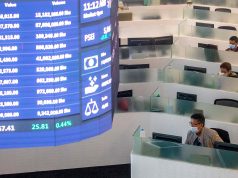By Victoria Fritz
WITH GLASS in hand, seven-year-old Anette would skip her way to the neighborhood sari-sari store (the Philippine version of the convenience or corner store) in far-flung Barangay Caibiran, Biliran, Leyte, to buy vinegar. The sari-sari store owner would then pour out the vinegar from a large bottle into a measuring cup, which she then transferred into Anette’s glass.
The year was 1986. Not too long ago really. The EDSA People Power Revolution was still dusting off its recent victory. The first millennials had just been born.
In 1989, little Froilan would scamper to Manang Ella’s stand to buy cooking oil in remote Guimaras Island. He would bring a jar (garapon in Filipino) with him, and then watch as the old lady would pour the oil in measured quantities.
But by 1991, when Anette moved to Bulacan at the age 13, she would see her first shampoo in sachet packaging.
The invasion of the sachet economy had begun.
Slowly it crept through the remotest corners of our islands, today making us the third largest plastic polluter in world after China and Indonesia. Plastic trash is found on the roads we travel on, in the rivers we swim in, the shores we walk on.
The numbers produced are beyond imagination: 163 millions sachets daily. That’s 60 billion sachets a year.
We are drowning in plastic.
From this deluge has emerged a little lifesaver in the form of the Zero Waste Store. It is small, but easy to replicate. Several have sprouted around the country. One of them is run by Mother Earth Foundation.
Mother Earth is a non-government organization that is working on creating zero-waste cities and municipalities through segregated collection at source, composting, and the management of recyclables at the village level.
The Zero Waste Store is essentially a return to the traditional way of buying commodities: the tingi (portion) system the way Anette and Froilan did it in the 1980s.
At its heart is the refill system for basic item like cooking oil, vinegar, and soy sauce.
Aside from those, the store also offers basic hygiene products like shampoo bars and liquid soap. I particularly like the insect repellent spray. Compared to the pure oil varieties, this oil and water mix sprays more evenly and thoroughly on the skin, and stays just as long.
It also sells glass, bamboo, and metal straws, and bamboo utensils for use on-the-go. A perfect Christmas gift idea.
It is not by any means the only store of its kind. Sierreza on the 4th floor of 195 Maginhawa St. in Quezon City has more products on sale at small portions, including honey, muscovado (raw sugar), coffee, and even agricultural produce. Similar stores exist in Makati, Mandaluyong, Cagayan de Oro, and Davao.
Refilling stations are also being introduced by the Department of Environment and Natural Resources at select areas in Bulacan, in partnership with the local government.
Mother Earth is continually looking for better products. We are shifting from palm oil to coconut oil. We are also looking to expand the product line.
What if liquid shampoo and soap can also be dispensed in measured quantities? There’s no harm in dreaming, and working to realize those dreams.
Most importantly, we plan to pilot such stores in our current and future project sites: Malabon, Navotas, and Taguig, among other cities and towns.
SACHETS MORE EXPENSIVE
In terms, of price, let’s focus on soy sauce as a point of comparison. The store offers portions as follows: one liter of soy sauce for P35; 500 ml for P25; and 250 ml for P15.
At a nearby sari-sari store, I found that a 60 ml sachet of soy sauce costs P5. Multiply 60 ml by four sachets to equals 240 ml, and that costs P20. That’s more than a 25% difference in price. It’s the same with vinegar. There was no sachet of cooking oil available, but it might result in even more savings. And the cost drops further at bigger quantities.
One brand of liquid shampoo costs P7 for a 13 ml sachet (10 ml with a 30% bonus). In contrast, at the grocery store, the same brand costs P259 for a 650 ml bottle. A 650 ml bottle is equivalent to 50 13-ml sachets; P259 divided by 50 equals P5.19. So a person buying a sachet at the sari-sari store pays nearly two pesos more that a person pays for the same amount of shampoo at a grocery store.
EARTH SAVINGS
Every time you buy at a zero waste store, you reduce plastic waste by several sachets. Imagine that multiplied by millions of individuals, millions of sachets.
It’s now 2019. Anette is our well-loved and exemplary cook. On the first Monday of each month, she gathers her jars and goes to the Zero Waste Store. At the store, Rufa, the store manager, pours the liquids through a funnel into a measuring glass — 500 ml of oil, 500 ml of vinegar, 500 ml of soy sauce.
Froilan is now president of Mother Earth. Together with chairman Sonia Mendoza, he is spearheading the creation of zero waste cities.
It’s still just a model store at the moment. But in the future, every time Mother Earth creates a zero waste store, it will reduce plastic waste by several thousand sachets per day.
Imagine walking once more along a pristine shore, or paddling down a fragrant river. Just like a hundred years ago.
Victoria Fritz is the Communication Officer for Mother Earth Foundation. The Mother Earth Zero Waste Store is located at 3F Eagle Court Condominium (8879-7005).



